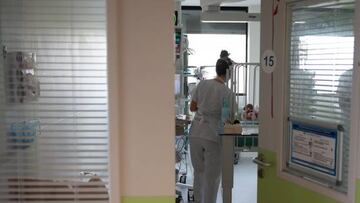How much does a nurse earn in US by hour: what is the average CNA salary?
The importance of healthcare workers was demonstrated throughout the pandemic and there is a now nation-wide push to bolster numbers in the profession.


One of the most important roles in the healthcare industry is that of nursing assistants, who provide the care required to help patients with everyday tasks. Certified Nursing Assistants, sometimes known as nursing aides, work as part of a healthcare team alongside licensed practical/vocational and registered nurses.
In 2021 the Bureau of Labor Statistics found that the median annual annual salary for Certified Nursing Assistants (CNA) was $30,310. This works out at $14.56 per hour.
In 2021 there were around 1,389,900 CNA jobs in the united states, with the overall employment for nursing assistants expected to grow by around 5% in the next decade. Over that period there are expected to be 220,200 openings for nursing assistants each year, meaning that there is plenty of opportunity for new workers to enter the industry.
The requirements for the role vary in different states, with each authority imposing their own education program and competency exam. Once you have gained these qualifications, you will become a Certified Nursing Assistant.
Nursing shortage predicted to continue until 2030
Since the early 1900s the United States has suffered numerous periodic nursing shortages. Often these were spurred by a single event, such as a recession or world war, but the current nursing crisis is part of a broader problem.
As life expectancies have increased and the population has skewed older, the demand for nurses and healthcare in general has never been higher. The baby boomer generation (born between 1946 and 1964) are entering into old age and the nation now has more people aged 65 or older than at any point in its history.
In 2011 there were 41 million people aged 65+; by 2019 that figure had risen to 71 million.
Related stories
Healthcare has also become more accessible and more affordable, meaning that the proportion of people entitled to support has also grown. While these two trends – longer life expectancies and greater availability of healthcare – are undoubtedly positive, the failure to add the required trained staff to the healthcare system could prove costly in the years to come.
A study from the University of St. Augustine for Health Sciences found that the US would need an additional 1.2 million new registered nurses by 2030 to address the shortage. Failing to do so could leave vulnerable patients unable to get the support they need and could push up the price of coverage significantly.

